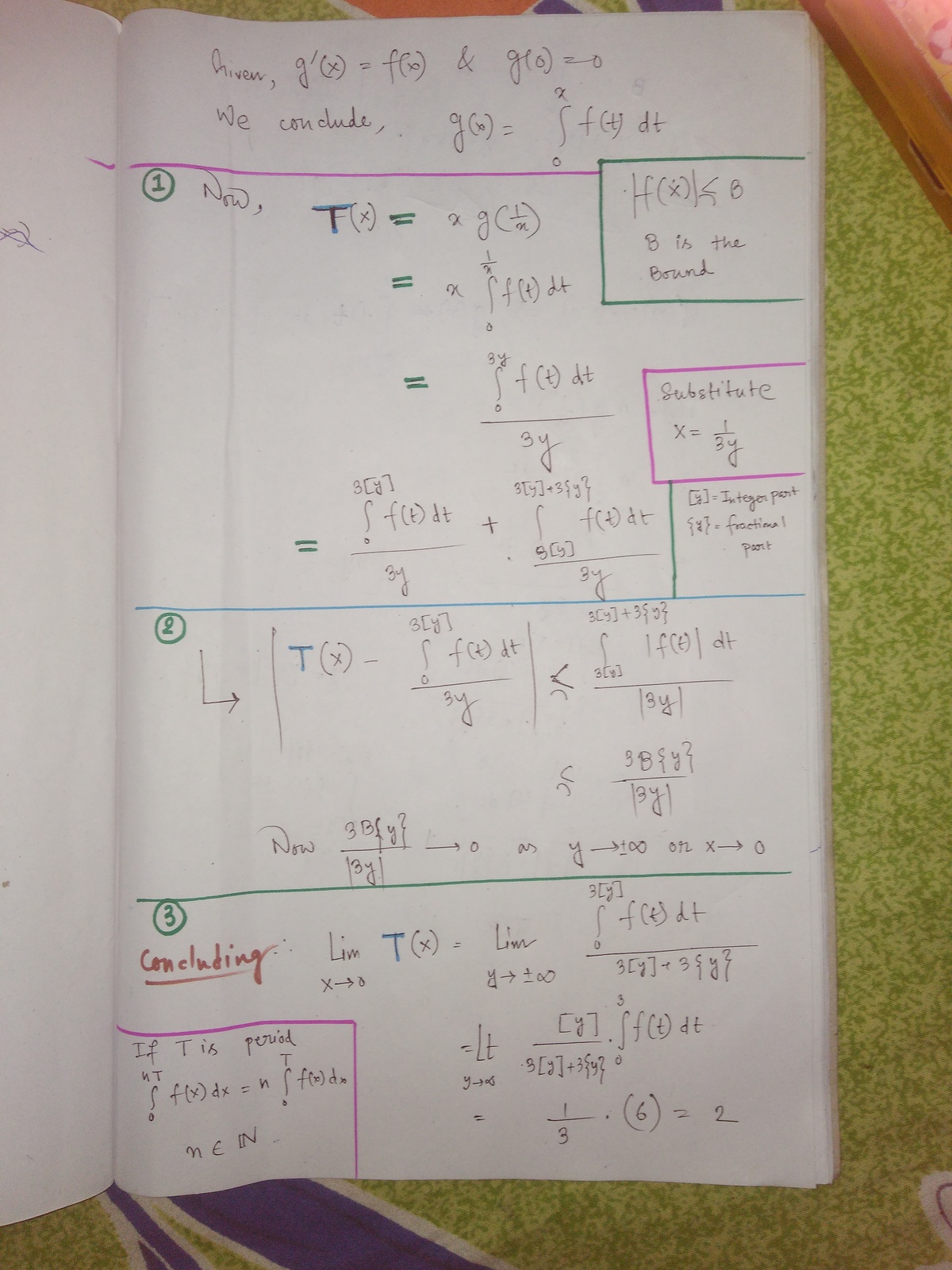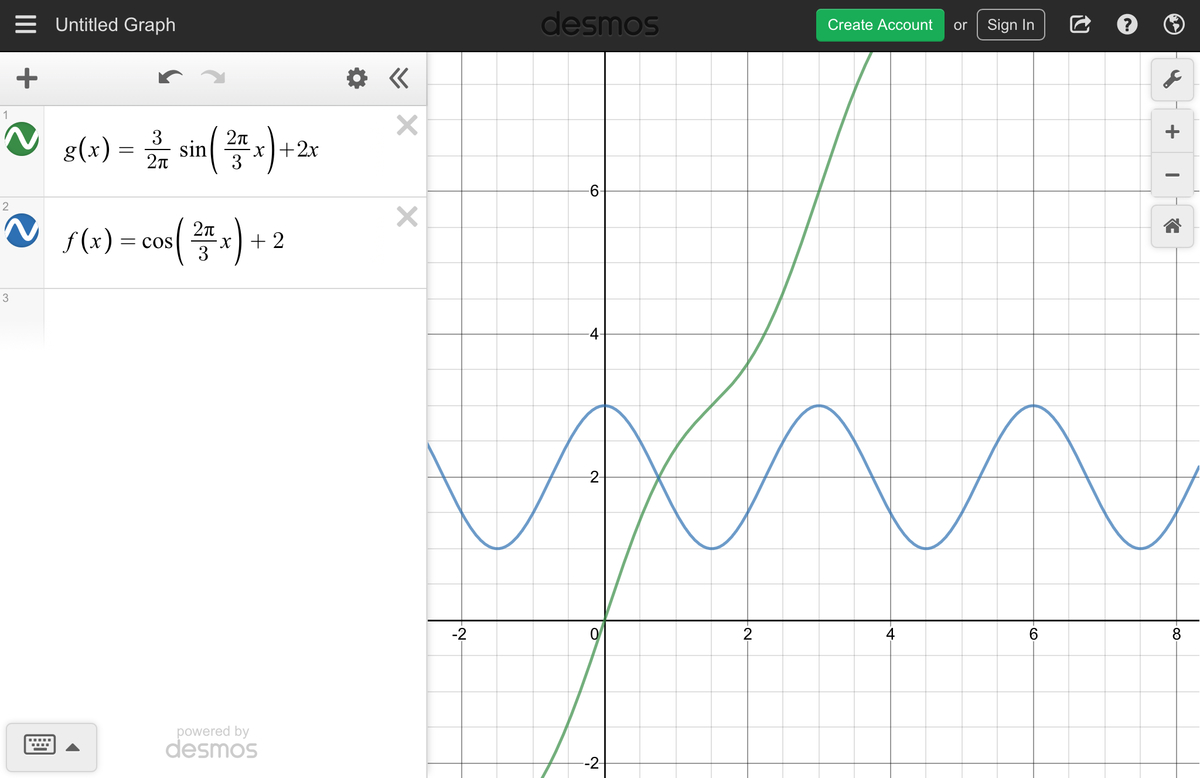Find the limit!
Let f be a continuous, periodic and bounded function with period 3 such that ∫ 0 3 f ( t ) d t = 6 .
If g ′ ( x ) = f ( x ) , such that g ( 0 ) = 0 , find the value of x → 0 lim x g ( x 1 ) .
If you think the limit doesn't exists, enter 5 5 5 .
The answer is 2.000.
This section requires Javascript.
You are seeing this because something didn't load right. We suggest you, (a) try
refreshing the page, (b) enabling javascript if it is disabled on your browser and,
finally, (c)
loading the
non-javascript version of this page
. We're sorry about the hassle.
2 solutions
 tried to do in a little rigorous procedure
tried to do in a little rigorous procedure
Nice solution!
First, let's get some key insights on the function f ( x ) and g ( x ) .
∫ 0 3 f ( t ) d t = 6 d x d g = f ( x )
Using the definition of an integral, we glean that:
g ( 3 ) − g ( 0 ) = 6 g ( 0 ) = 0 g ( 3 ) = 6
Now, let's think practically. Sure, there are some sine and cosine waves that work with these formulas, so if you want to use these, be my guest:
 Ugly Sine Waves
Ugly Sine Waves
I'm going to use the practical way. The line that passes through the points ( 0 , 0 ) and ( 3 , 6 ) is g ( x ) = 2 x . d x d g = 2 = f ( x ) . Surprisingly, this function satisfies the rest of the requirements! The integral will be just the area of a rectangle with side lengths 2 and 3 , which will be 6 units 2 . And because it's a constant function, f ( x ) = f ( x + 3 ) , so this function technically speaking has a period of 3 .
The rest is computation:
x → 0 lim x g ( x 1 ) = x → 0 lim x x 2 = x → 0 lim 2 = 2
Our answer is 2 .
Your solution is okay for getting an answer. But just taking an example of a function is not a complete solution. You have to show that the limit is same for all functions satisfying the requirements.